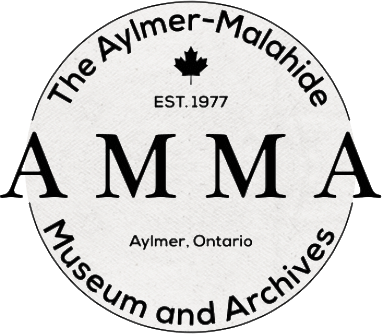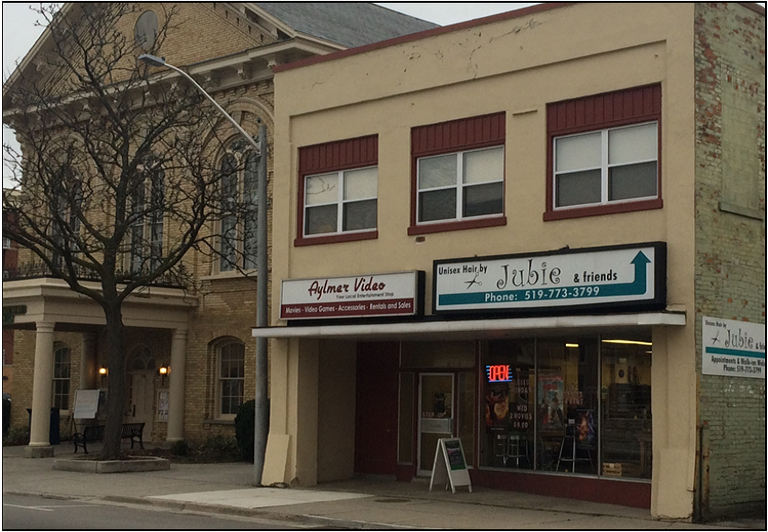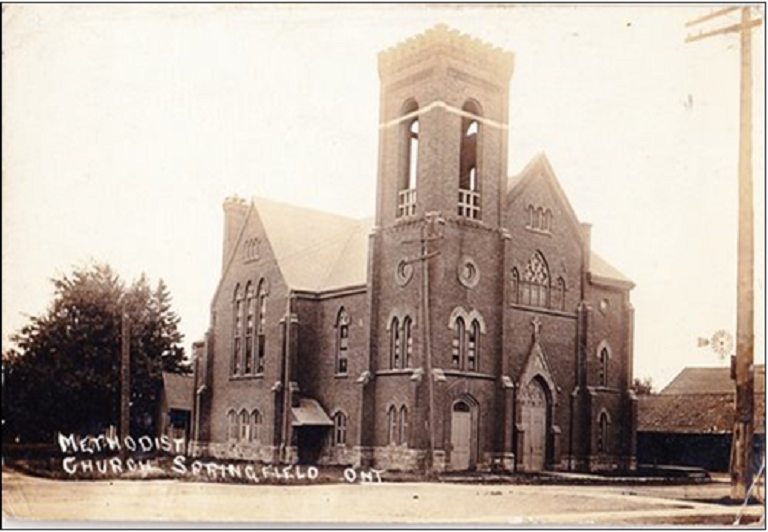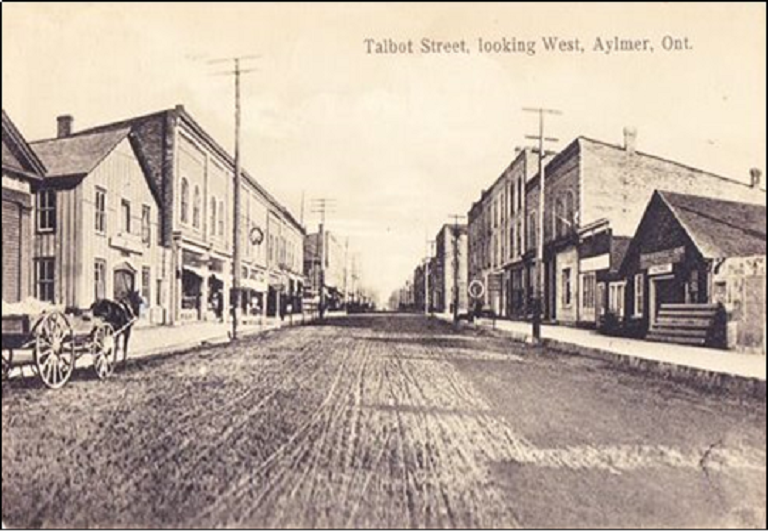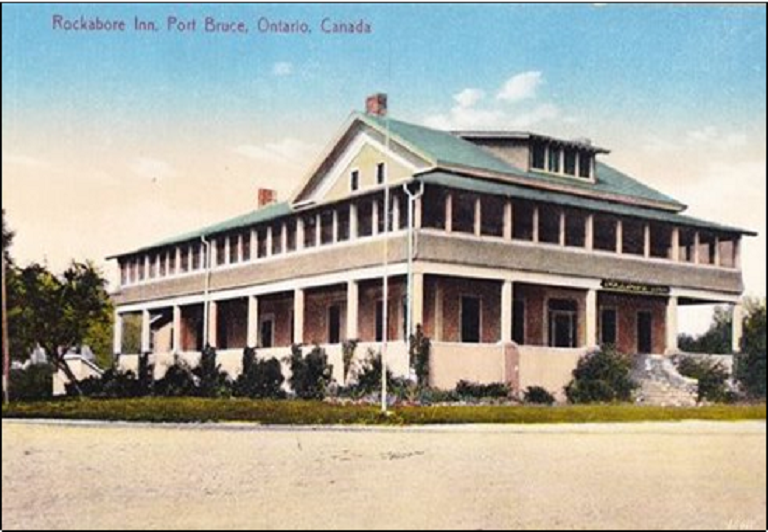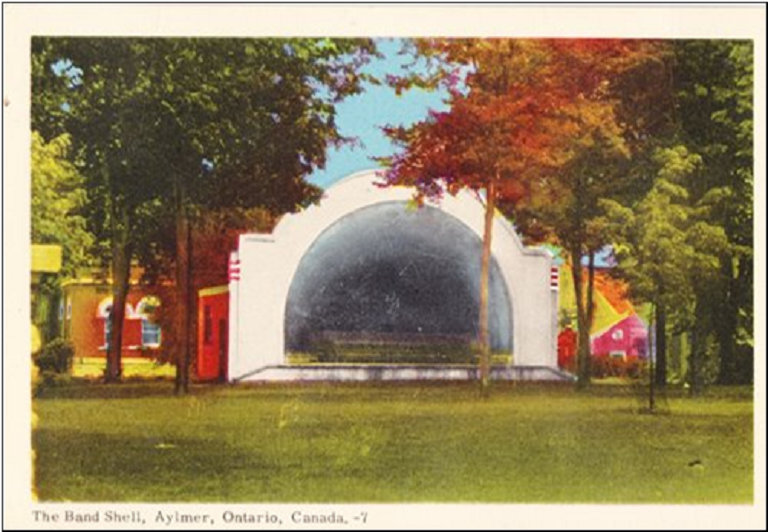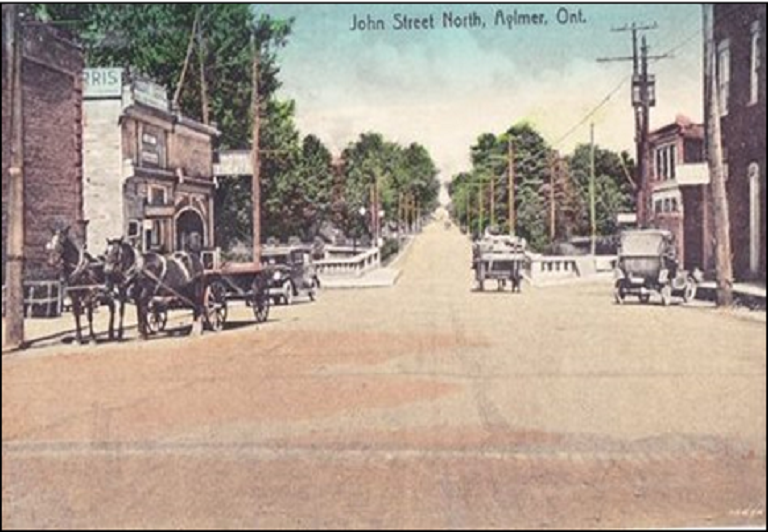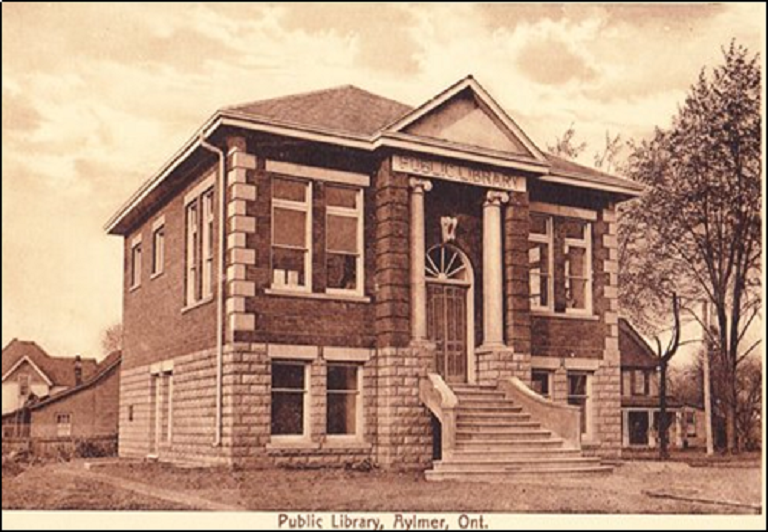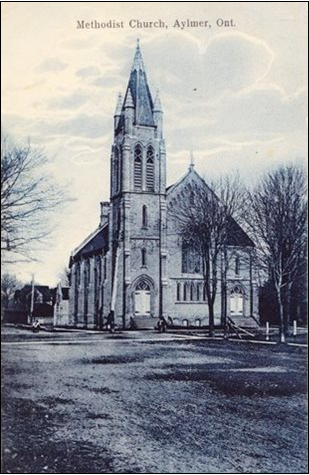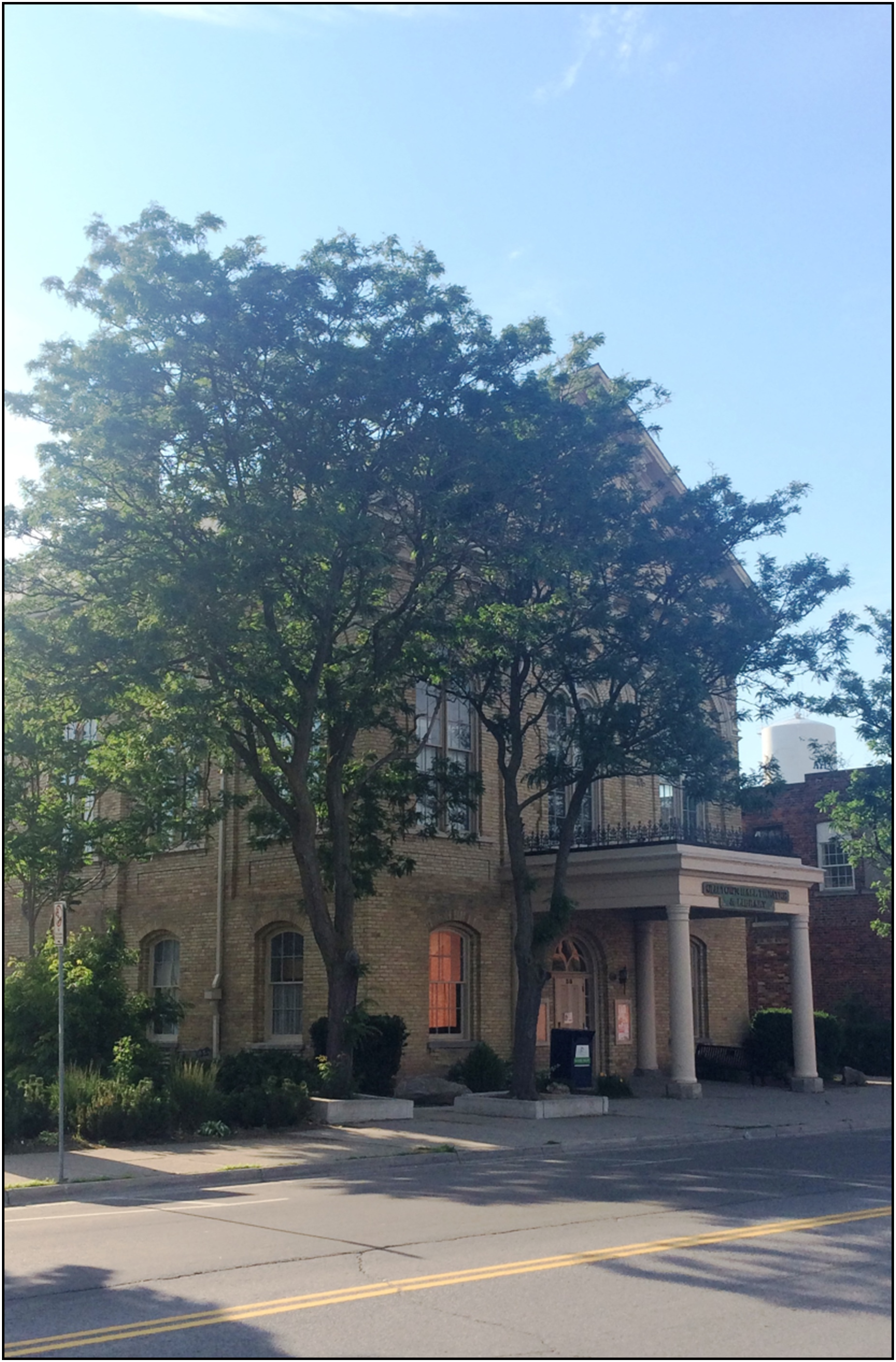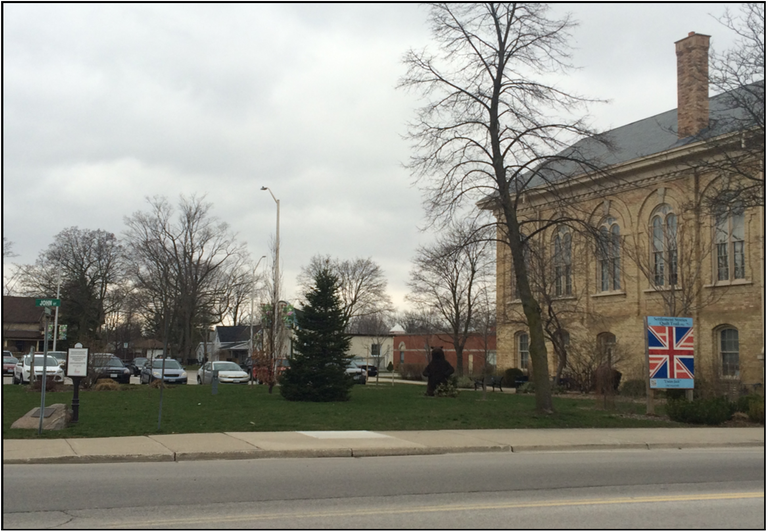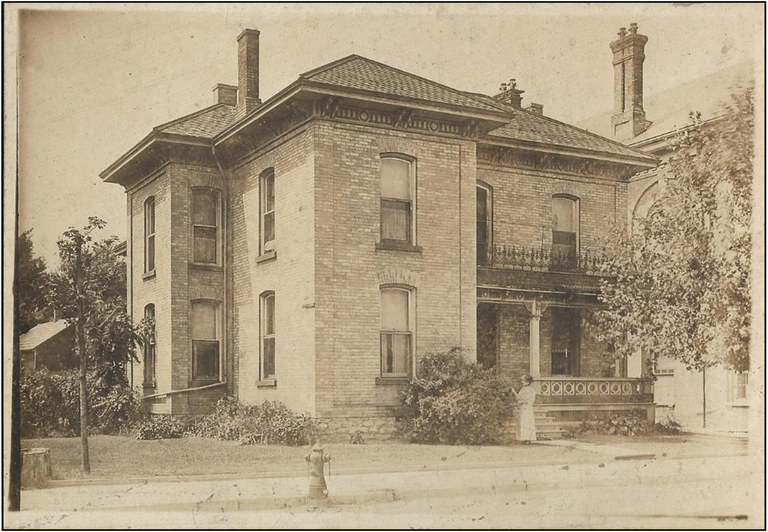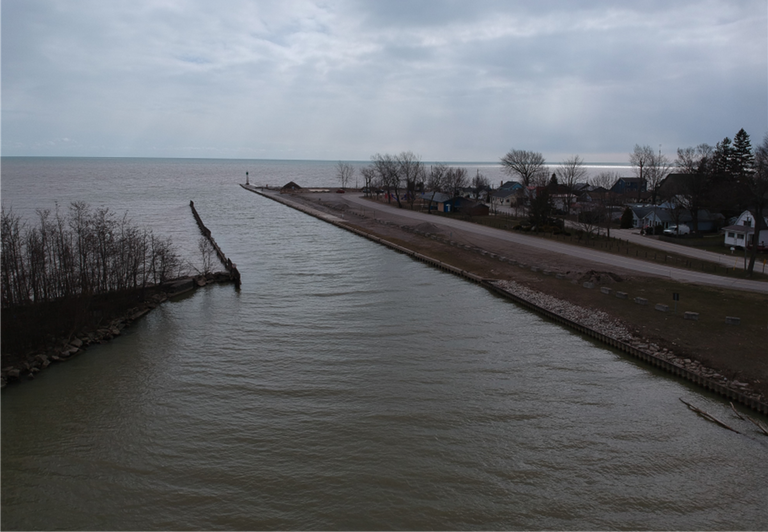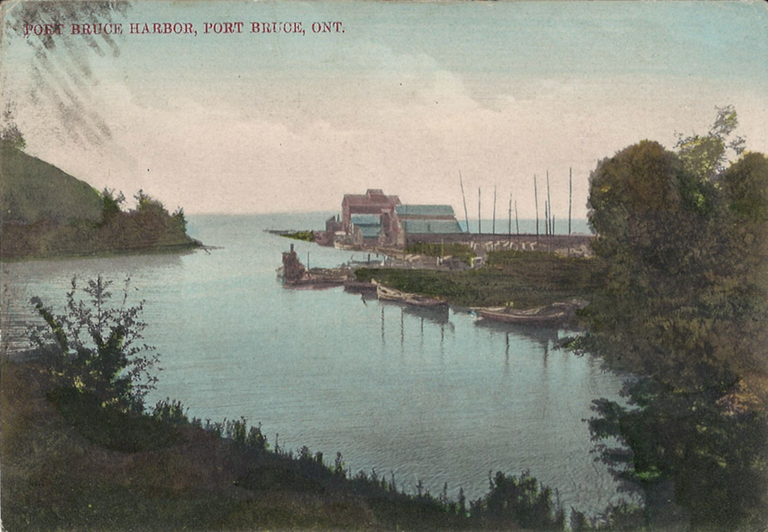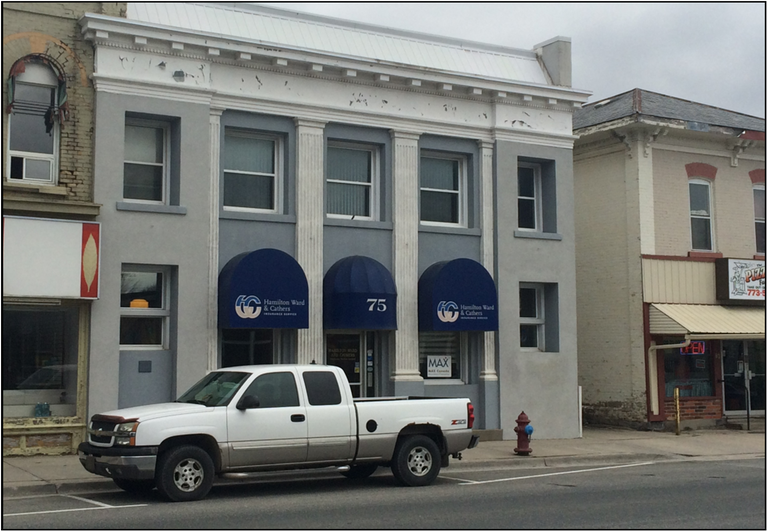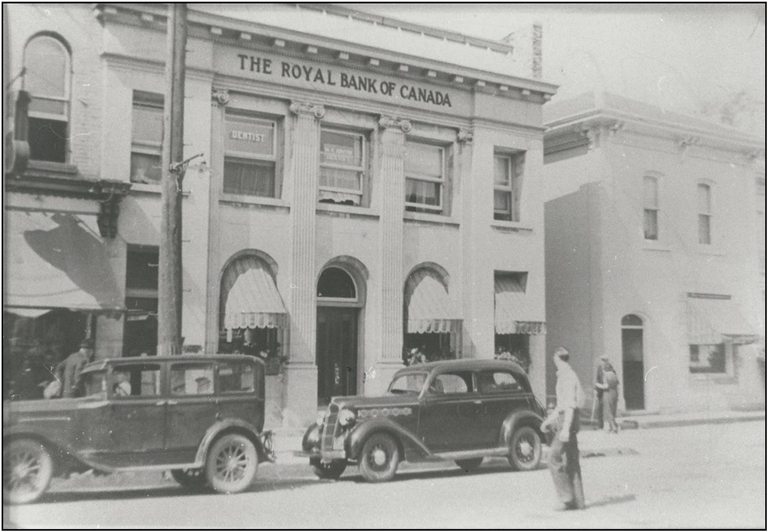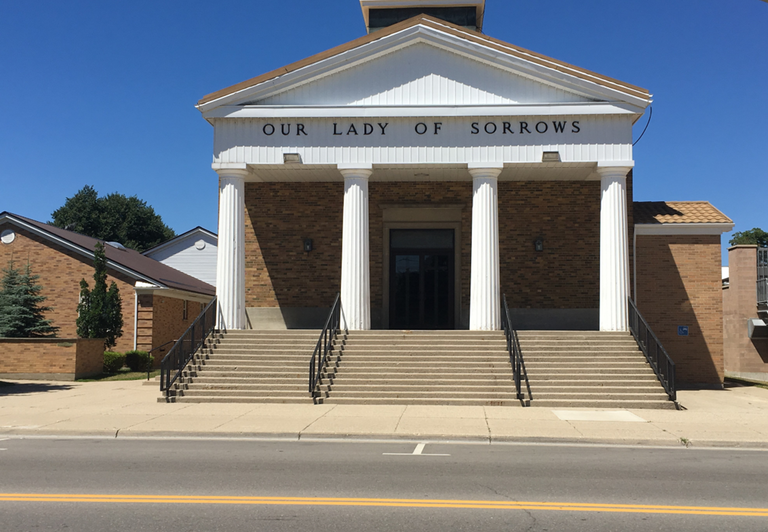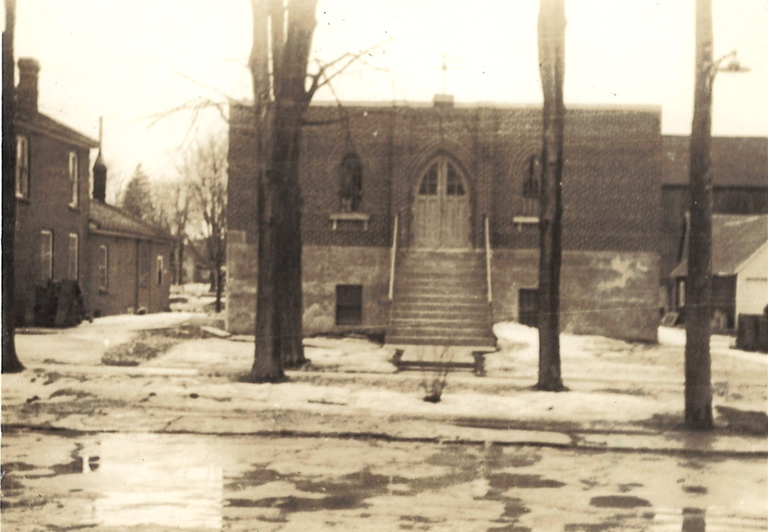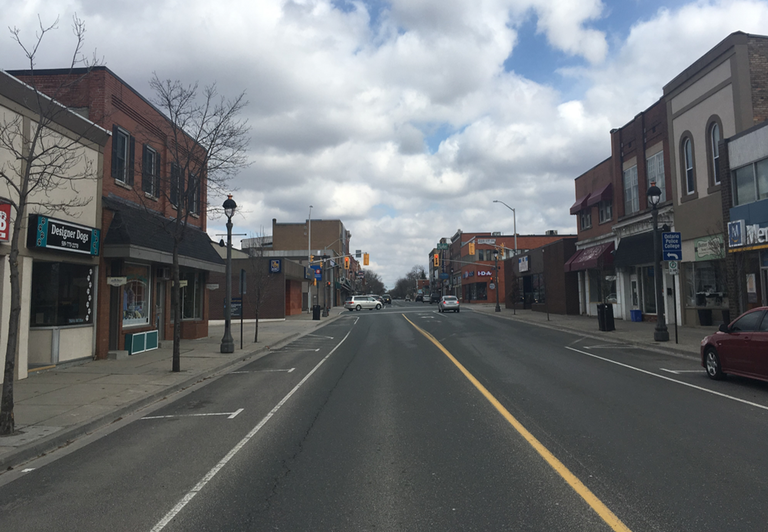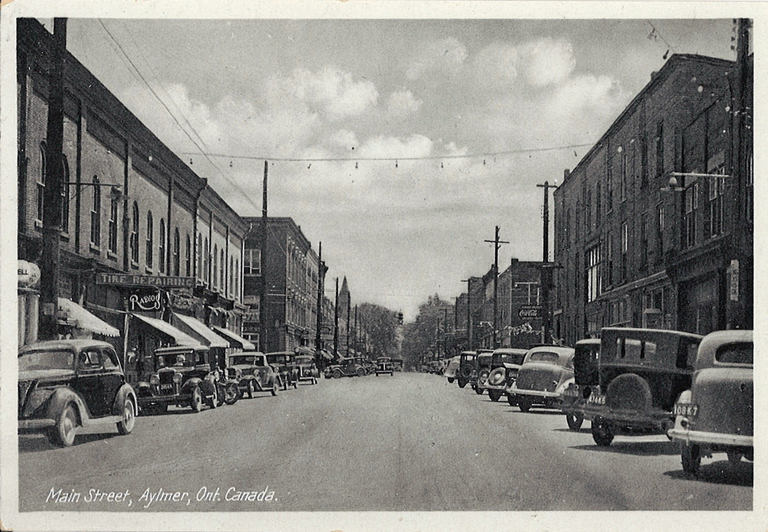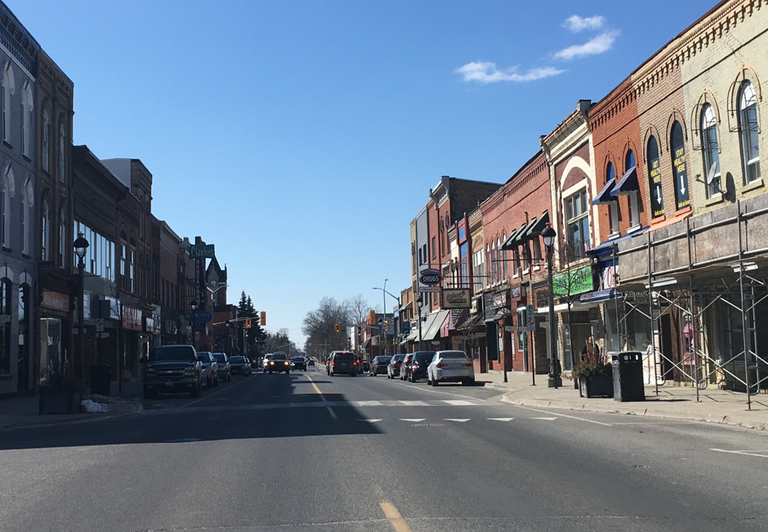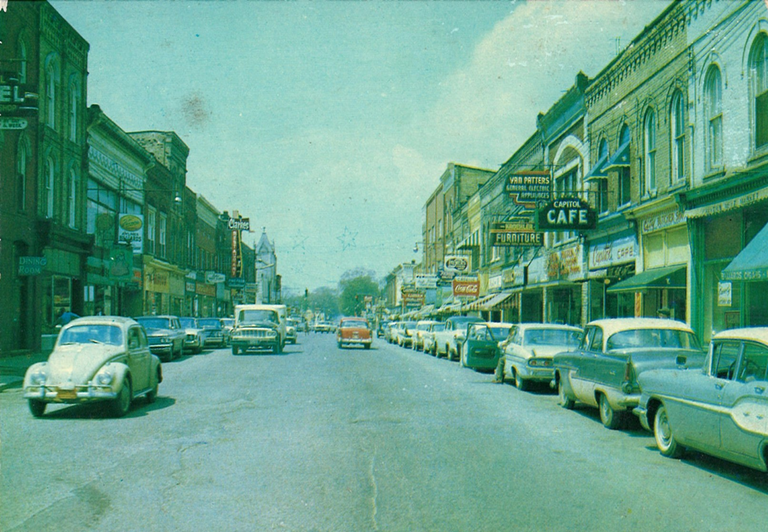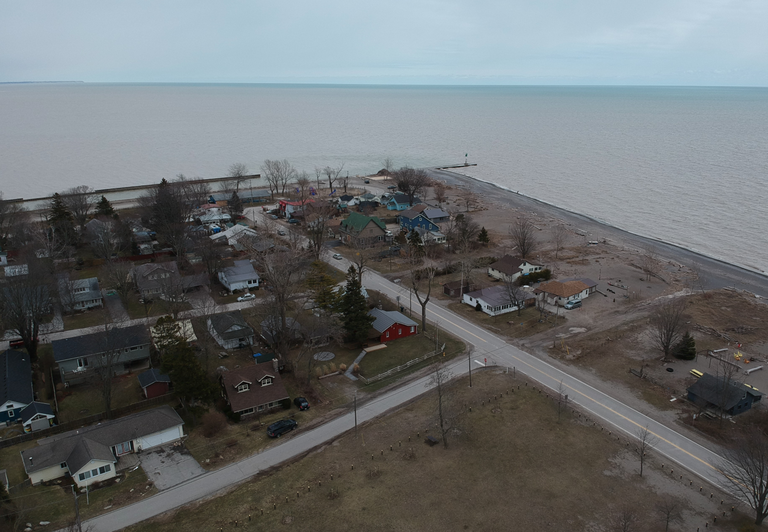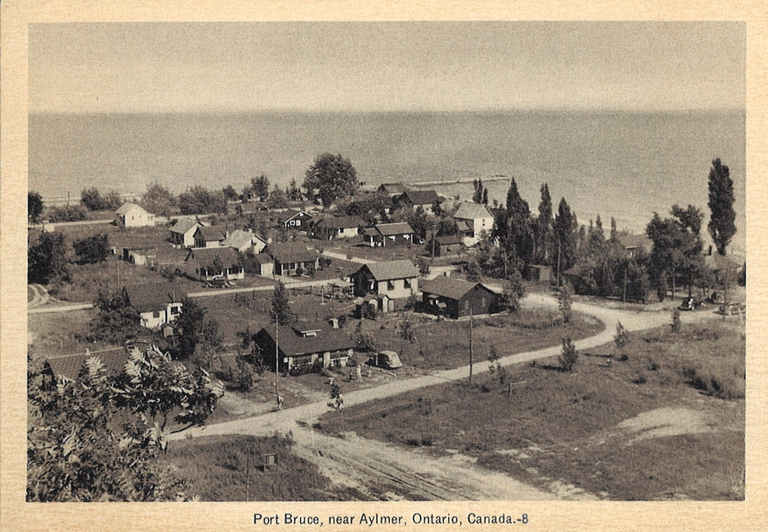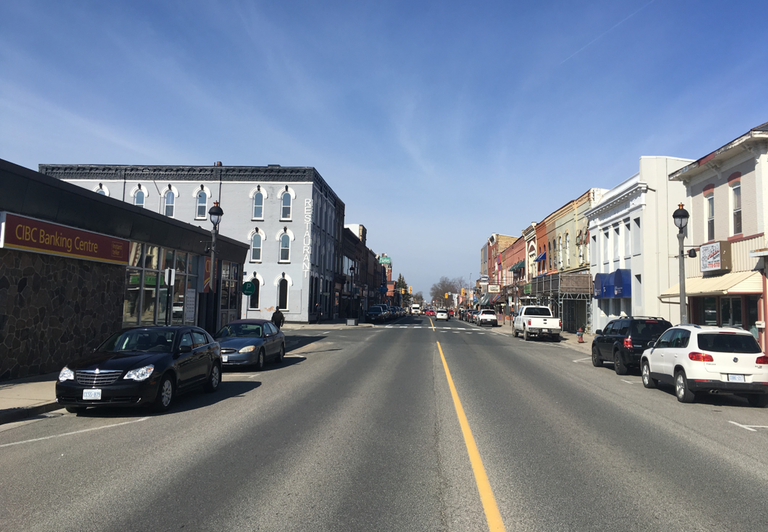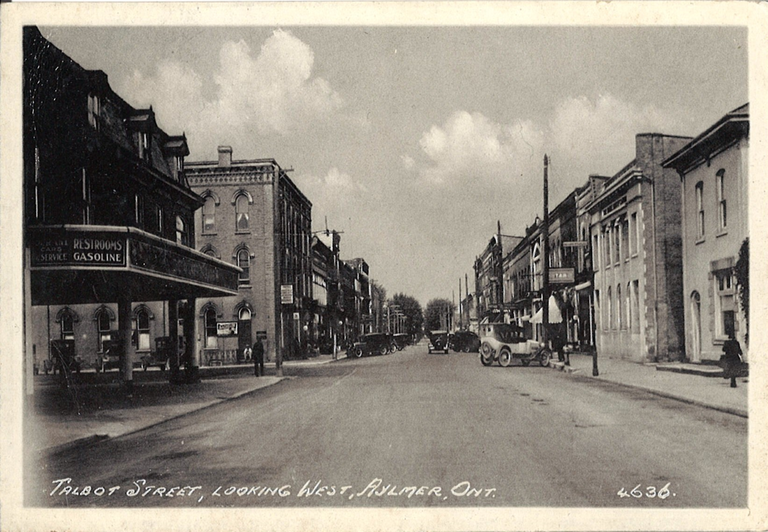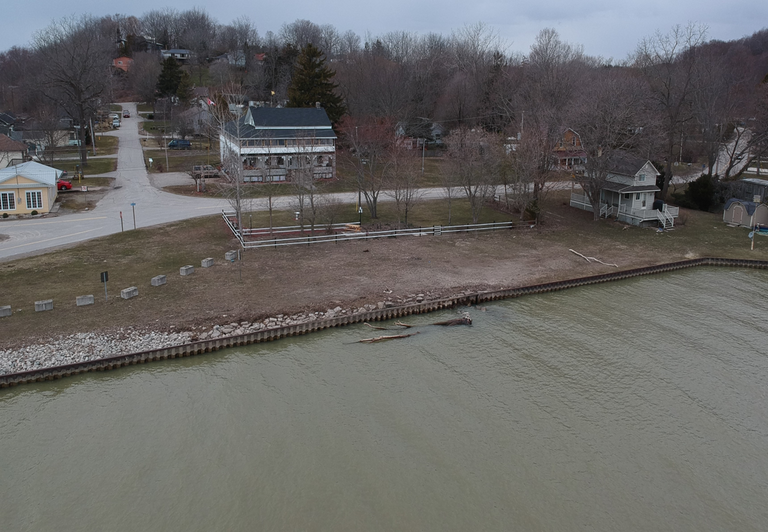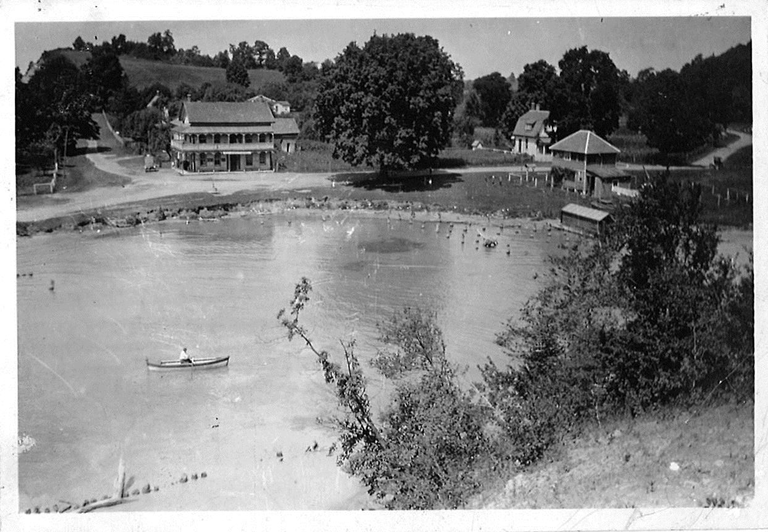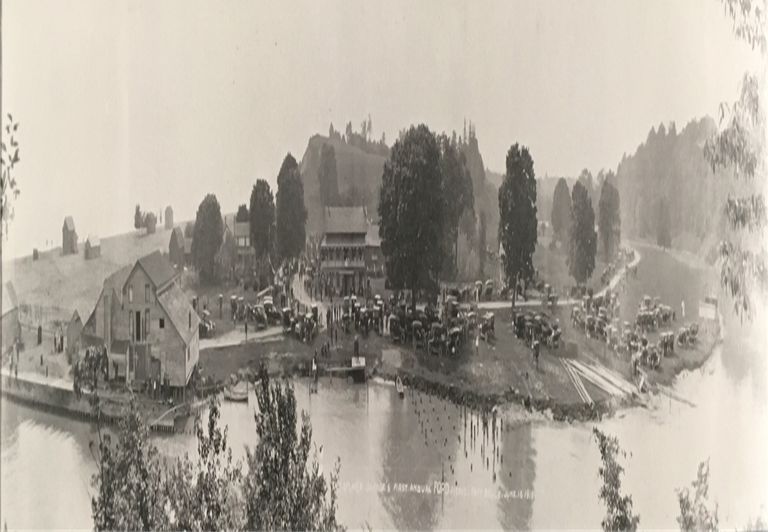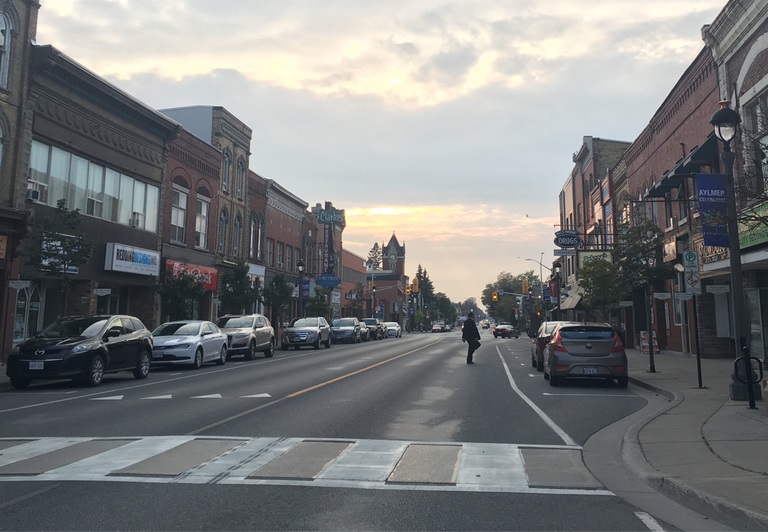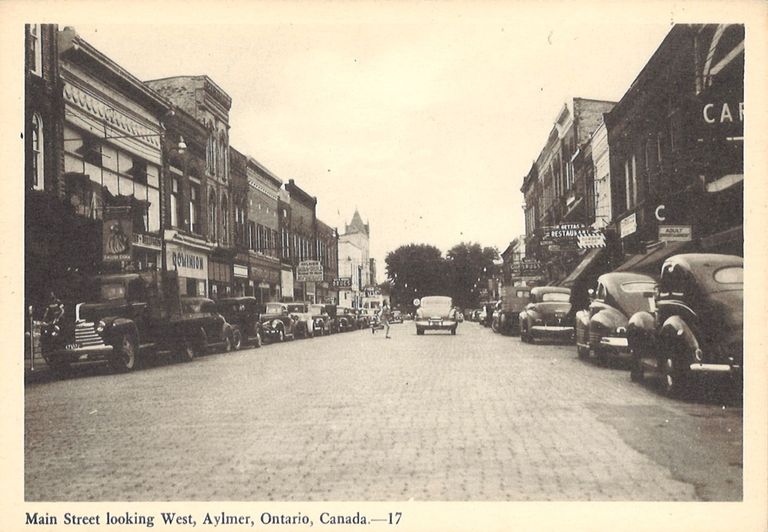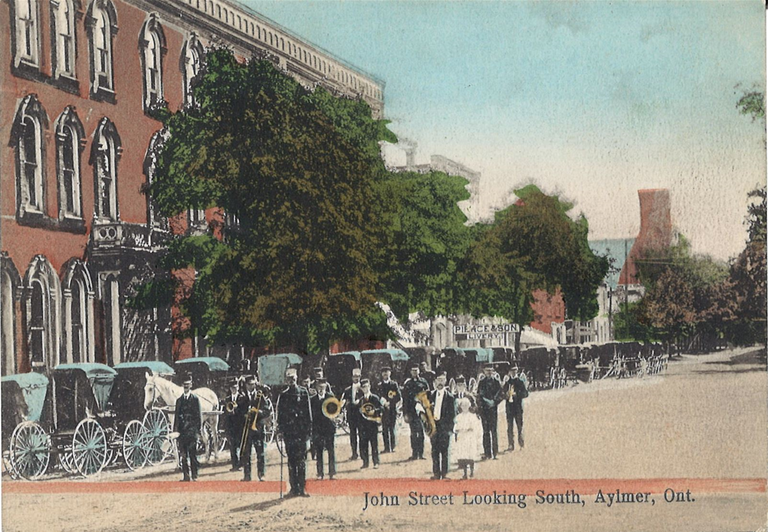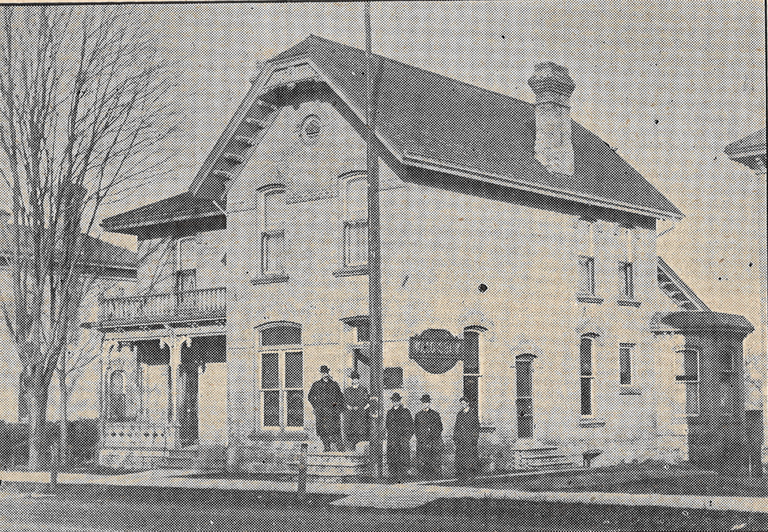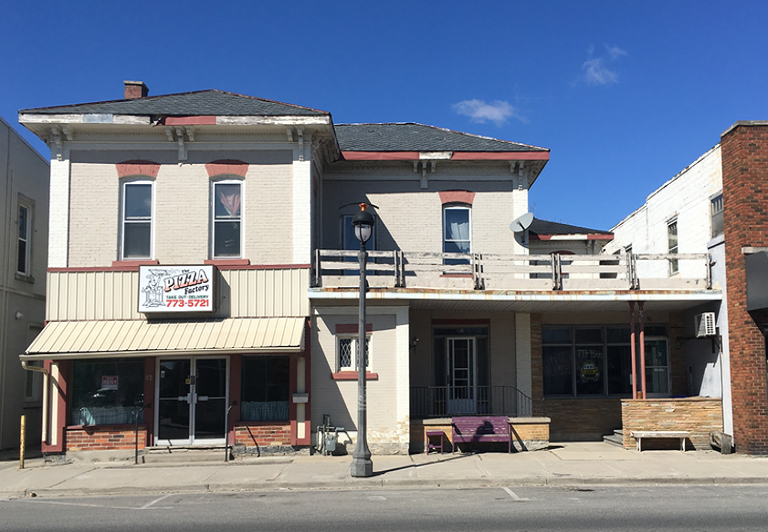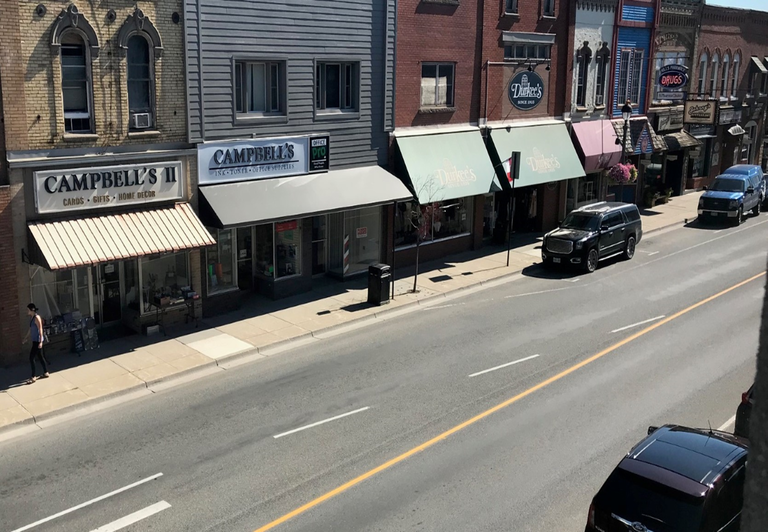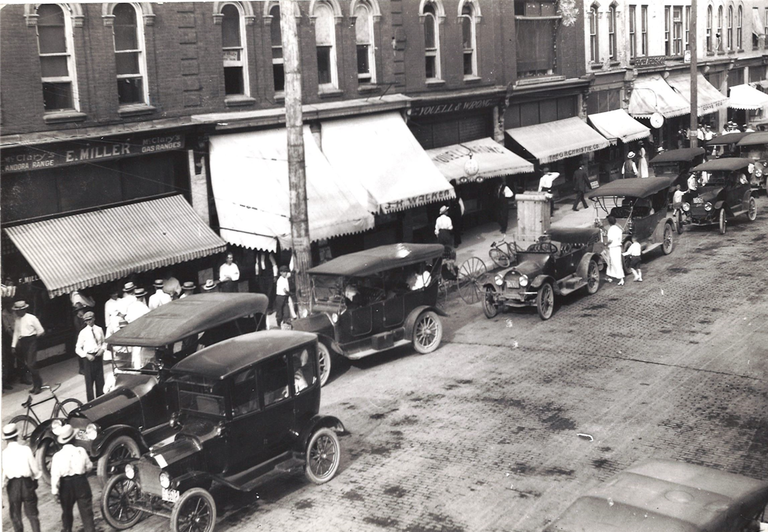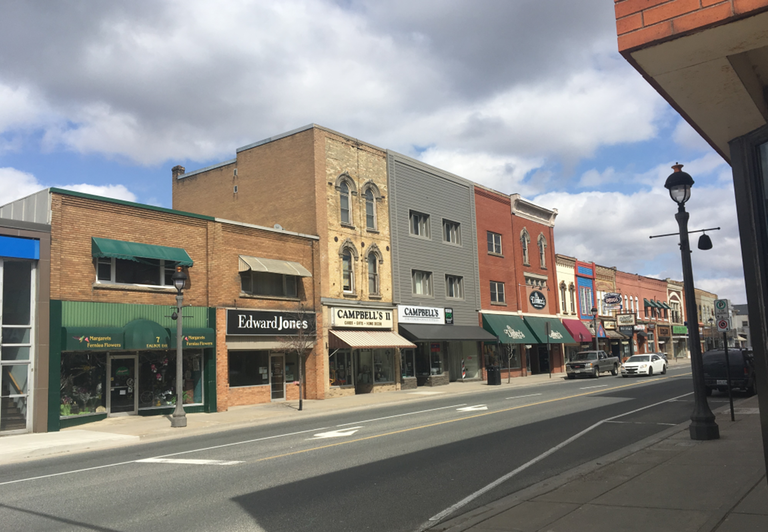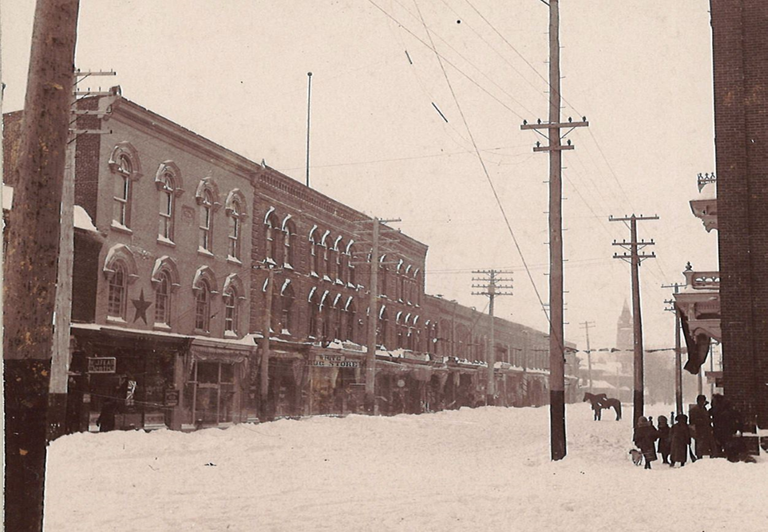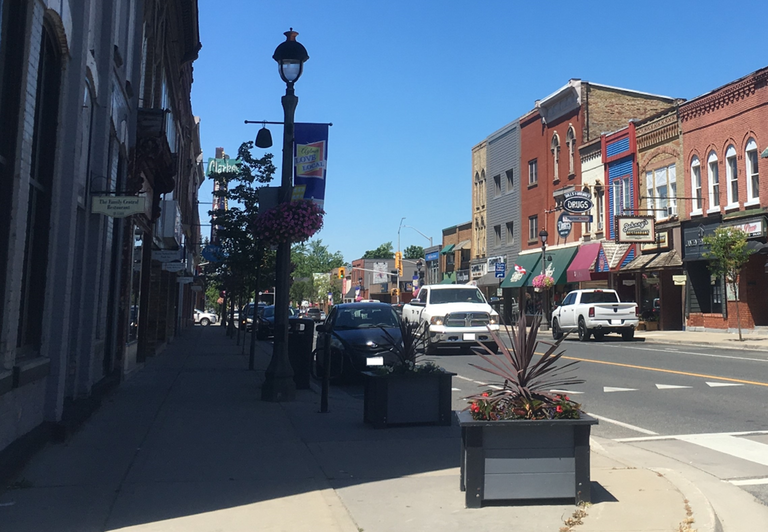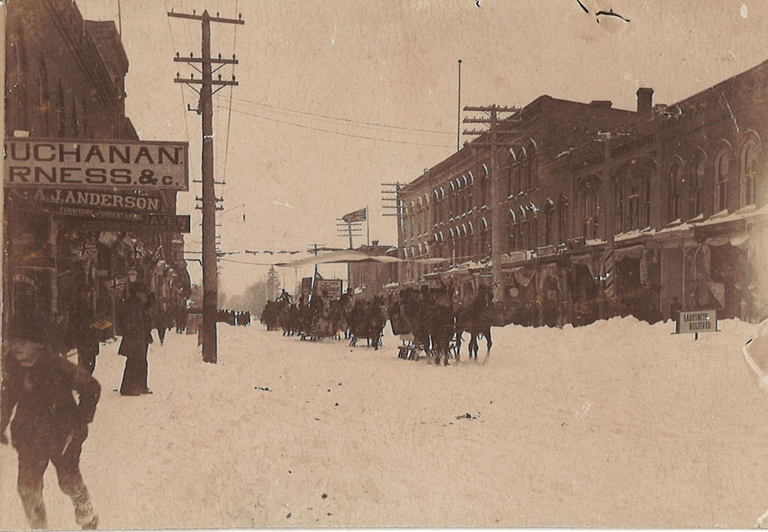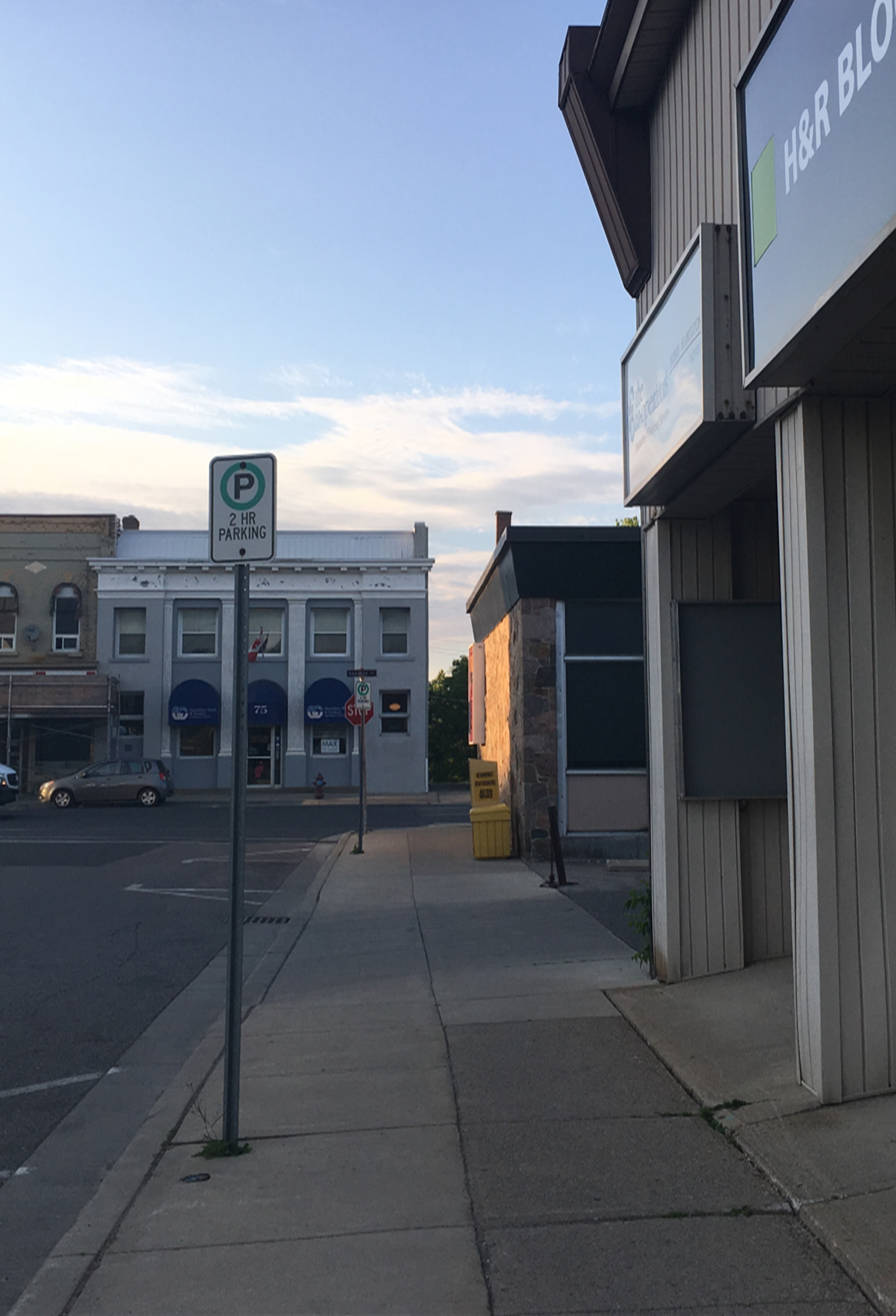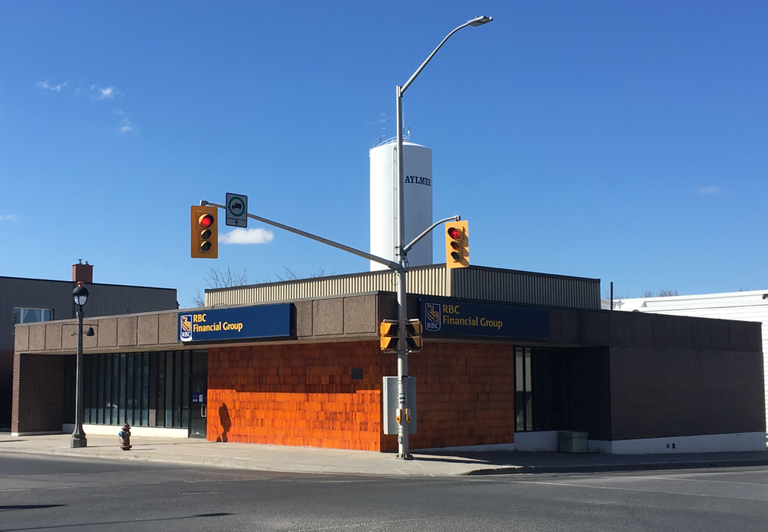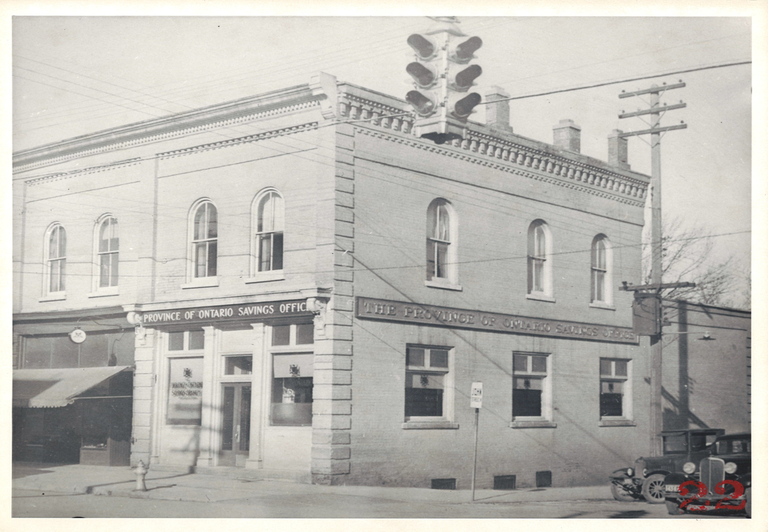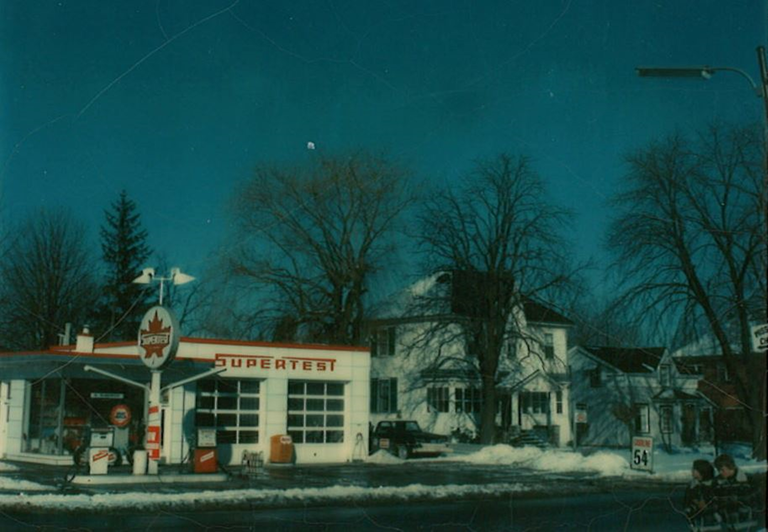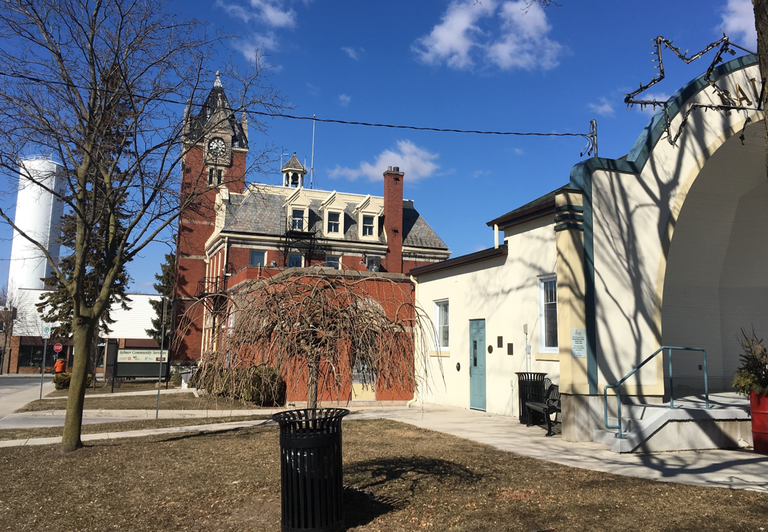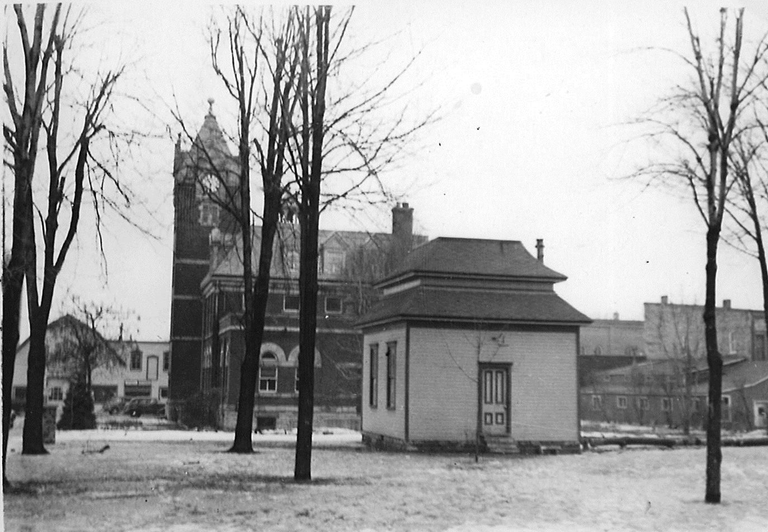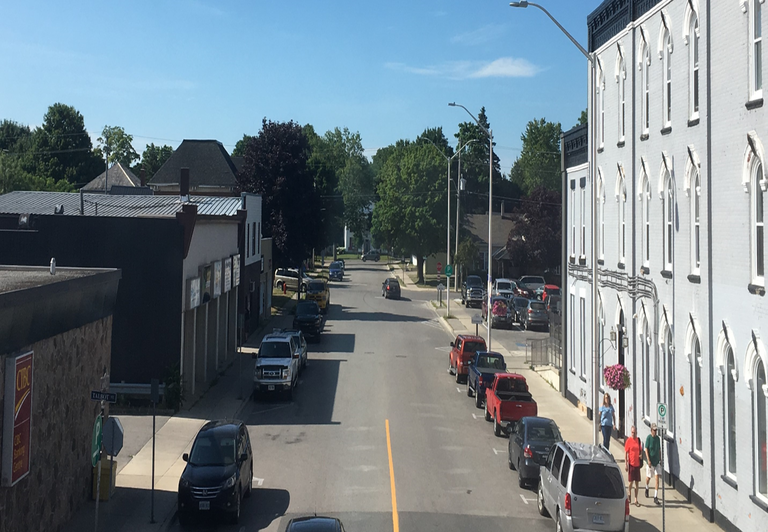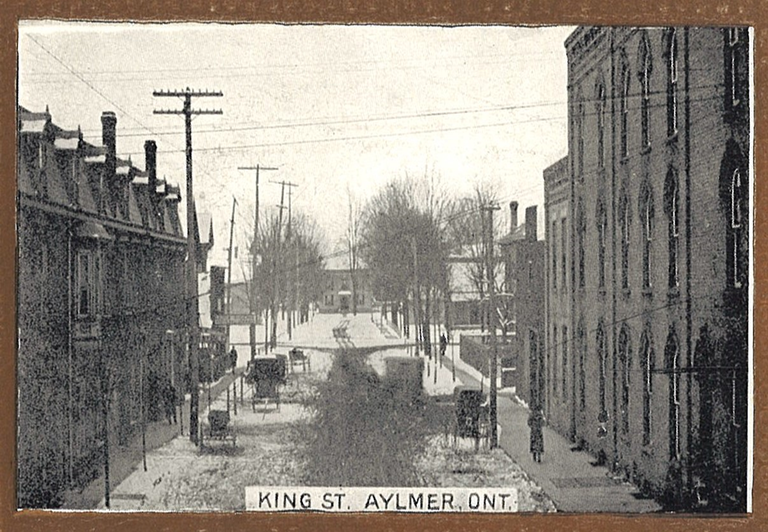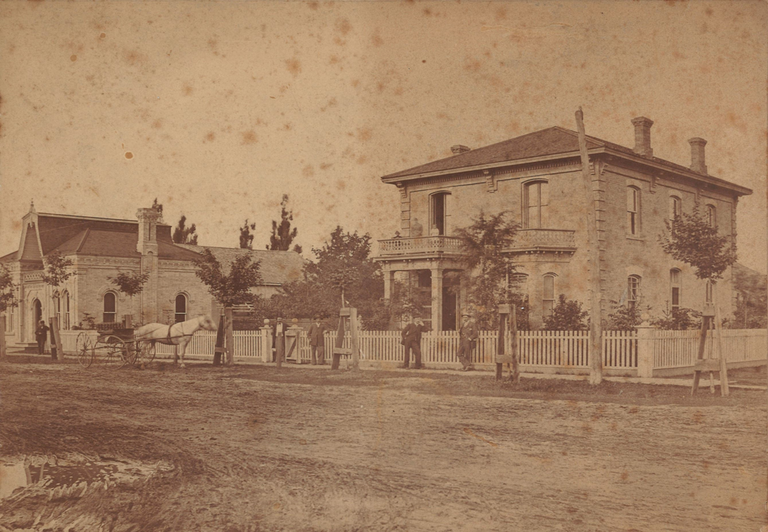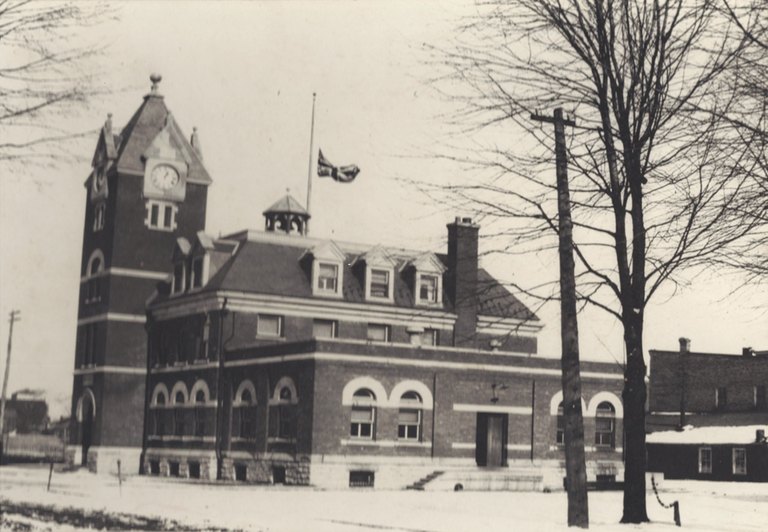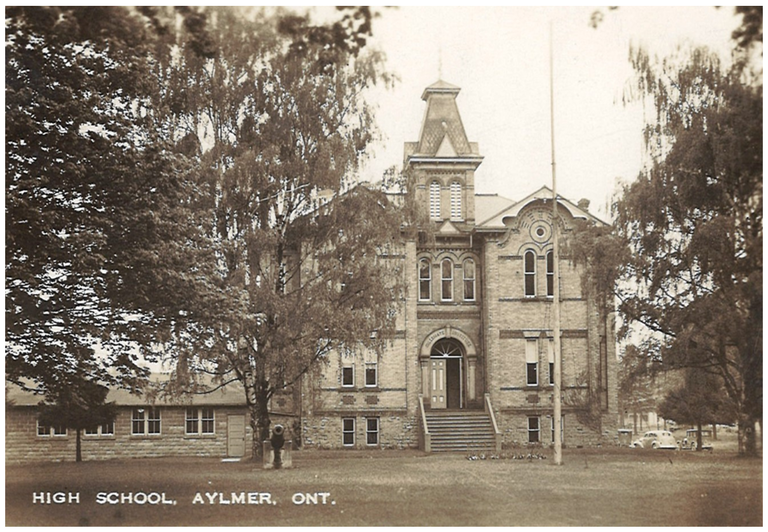Gallery
A Glimpse into the Past
Then & Now
Use this interactive map to go back in time and see how the place you know as home has changed over time.
Check out locations in Aylmer, Springfield, Luton, and Port Bruce!
Gallery


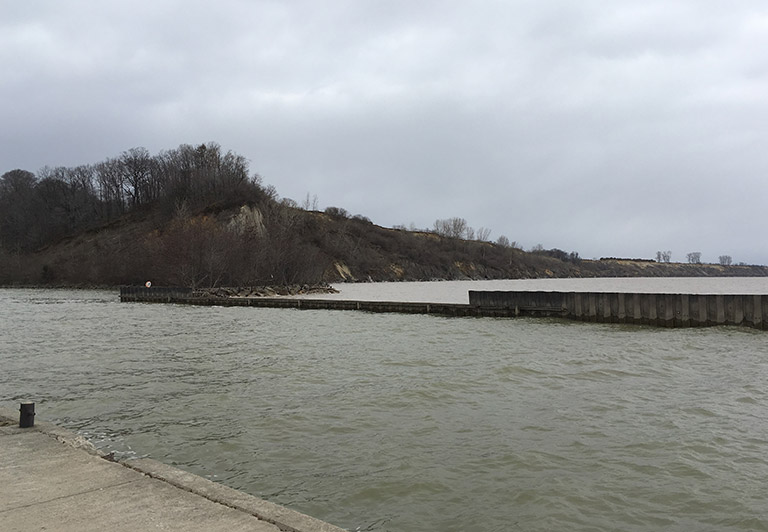
The Cliffs of Port Bruce
Port Bruce was very important in the early history of Malahide. It was originally referred to as "Catfish Harbour", as the Port feeds the waters of Catfish Creek. The Harbour in Port Bruce wasn't established until the 1850s because the Hale Family refused to sell or develop two lots of land. Amasa Lewis and Lindley Moore constructed a warehouse and four hundred foot pier. Once the pier was in operation Port Bruce became a shipping centre for the lumber and grain produced in Malahide Township. The Harbour lost its importance once the railway was introduced in the 1870s.
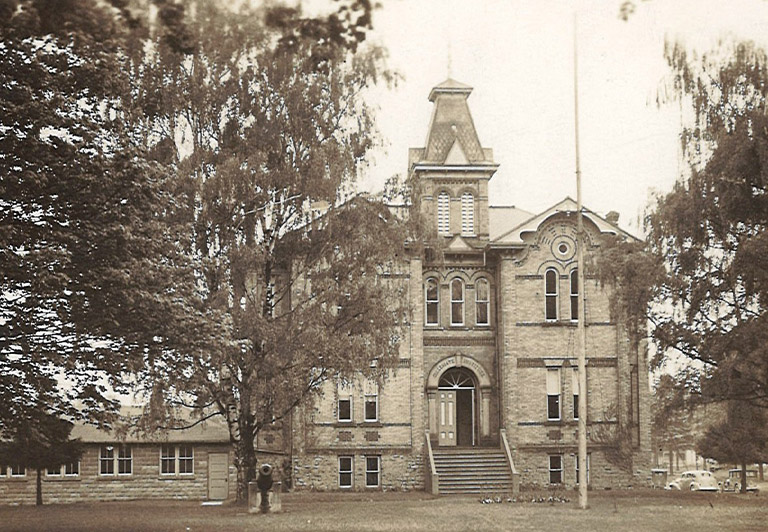
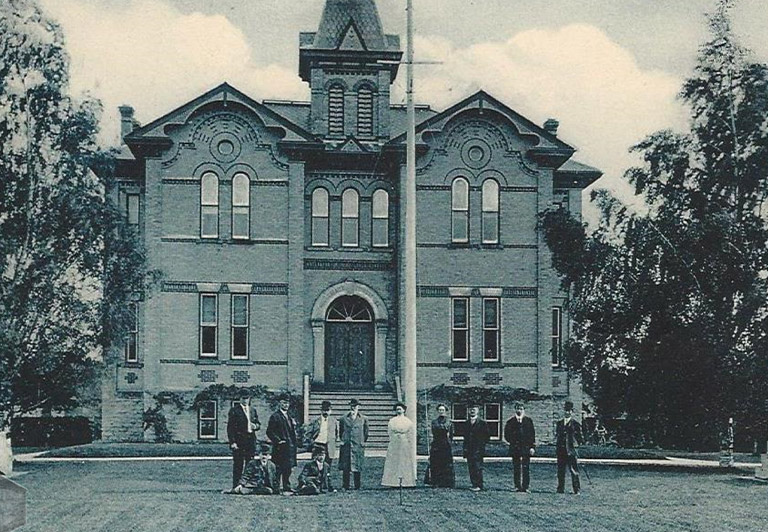

Aylmer High School
In 1871 the provincial government made an extensive overhaul of the educational system in Ontario. As a result, in 1872 a separate high school district was created for the Aylmer area. Prior to this, local students attended high school at Grammar Schools in St. Thomas or Vienna. The Aylmer High School was established in 1872 to serve the villages of Aylmer and Springfield, as well as the townships of Malahide and South Dorchester. A schoolhouse was not constructed until 1873, so for the first year the high school class was conducted in a room in the elementary school on John Street. Enrollment in this first year had 35 students. A two-storey brick high school was then built next to the elementary school in 1876. This building marked the first separate Aylmer High School. The first principal of this school was Mr. Harry Long. In the mid-1870s the Aylmer United High and Public School Board governed both the High School and Public School. In 1885 a by-law was passed to allow Aylmer Council to raise $8,000 to purchase 9 1/5 acre from Mrs. Alex Treadwell in order to construct a new school. With the town continuing to expand, the 1876 high school was proving to be inadequate. Only 4 acres were needed for the new school, and lots were sold to the public on St. Andrew Street. On the west side a new street was made and named after the new principal W.W. Rutherford. In 1886 a new high school, known initially as the Aylmer High School, was constructed on Talbot Street West and the old school building was sold to the Public School Board for $3,500. The new high school was designed by Mr. M. L. Buffy. The building was three storeys in height, and measured 64 feet long and 54 feet wide, featuring 14 rooms. The new Aylmer High School was officially opened on Wednesday, October 13, 1886. Aldrich's Pocket Directory of 1888 describes the building in detail, stating that the basement had two waiting rooms, a furnace room, cloak room, and laboratory. The first floor featured two large class rooms, one small class room, a teacher's room, and a library. The second floor featured a large assembly room capable of seating 200, a museum, apparatus room, and one large class room. The school also had a gymnasium that was likely the first gymnasium in Elgin County. On the first and second floors were two corridors, 9 feet wide, that extended the length of the building. The waiting room and laboratory were equipped with sinks and wash bowls. The building was capable of accommodating 200 students, and was thoroughly equipped with maps and a library. The Aylmer High School prepared students for First, Second and Third Class Teachers' Certificates for Matriculation, with honors in Arts, Law, or Medicine. As of 1888 W.W. Rutherford was the Principal, W.M. Logan was the Classical Master, Thomas Porter was the Modern Language Master, W.R. Smith the Science Master, and W. Knight was the History and Geography Master. In 1890 the Aylmer High School changed its name to the Aylmer Collegiate Institute. The staff consisted of 5 teachers and a drill instructor, and there were 216 students attending the school. Mr. Rutherford was still the principal. Reports in the Aylmer Sun point out that the school often ranked from first to third in the province in its mid summer examinations. In front of the school were two maples, which originally came from land owned by Hiram Brown. These were planted in 1887 by the janitor Mr. Davenport, who together with Principal Rutherford, were responsible for the condition of the grounds and received praise for their work from a government inspector. In 1899 the cannons were secured for the Aylmer Collegiate Institute. The cannons came from the federal government and weighed 4,000 pounds. They date back to 1806 and were brought to Canada for the War of 1812. In 1911 the Aylmer Collegiate Institute was renamed the Aylmer High School again. Throughout the late 1920s and early 1930s concerns were raised by inspectors about the Aylmer High School building, and the Department of Education informed the school officials that if something was not done that they would not receive their grant. In January of 1936 another inspector found that the Aylmer High School was too old and inadequate for the renovations it needed. Inadequate heat, light, and ventilation, and overcrowding were all problems with the existing building. There was a push by local clubs and the High School Board for a new High School building. In August of 1937 Aylmer Council voted for new high school. In September of 1937 the Aylmer High School reopened in the former Hat Factory on Myrtle Street. On October 14, 1937 the cornerstone of the new Aylmer High School was laid. The corner stone of the new Aylmer High School was laid on October 14, 1937 by Mayor Dr. H. J. Davis and the new building was constructed. To the right of the front entrance was the principal's waiting room and to the left was the female teachers' room. On the main floor there were four classrooms that featured sloping blackboards to prevent the reflection of light in pupils' eyes. The entrance to the gymnasium galleries was also off of this floor. On the second floor were two classrooms, a library, the male teachers room, the home economic rooms, and the science laboratory. The furniture in the library was walnut and on the walls were replicas of the sculptured stone panels over the front entrance. The home economics room was designed according to the regulations that were set by Department of Education and was a large room 40 feet long by 25 feet wide, and was divided into smaller rooms with three foot high removable partitions. The smaller rooms were furnished to represent two kitchens, each with a sink, cabinet, table, refrigerator, and stoves, a dining room with a table and buffet, a laundry room with tubs, a washing machine, and an ironing board, a bedroom with a folding bed to conserve space, and a sewing room with a sewing machine and work tables. The room featured ample storage cupboards for dresses, kitchen utensils, and other equipment. The science laboratory was furnished with the "very best desks" and specialized science equipment. All desks were supplied with running water, electric outlets, and an exhaust system to ventilate them. The basement was a combined auditorium and gymnasium, 43 feet by 80 feet, with red tile wainscoting 5 feet high. It also featured a hydraulic stage that measured 15 feet by 20 feet. The floor of the stage also part of the floor of the gymnasium, however when the space was used as an auditorium the stage was raised. The new Aylmer High School opened in March of 1938. In 1949 a four room addition was made, and in 1952 an additional four rooms and the gymnasium were added. The East Elgin District High School Board was established in 1947. In 1959 an additional six rooms were constructed. In the summer of 1962 a fifteen room vocational wing was constructed, costing approximately $1,000,000, and included rooms for automotive, electrical, metal, and wood shops. A two year vocational course was offered for the first time in September of that year. In 1969 another expansion was added costing 2,500,000. This addition provided more room for students in Bayham who previously attended school in Tillsonburg. In 1970-1971 a multi-room addition was completed that included a new gymnasium, library, cafeteria, seminar room, lecture room, science classrooms, department offices, and head offices. By September of 1973 all Bayham students except those living in the northeast corner were to be attending East Elgin Secondary School. This addition also replaced the six portables which had been in use.
